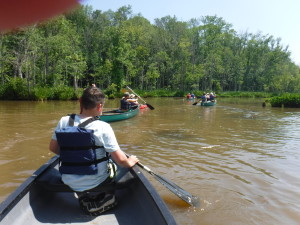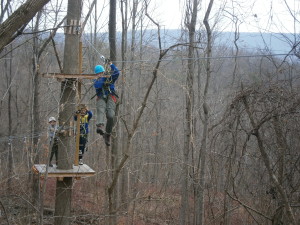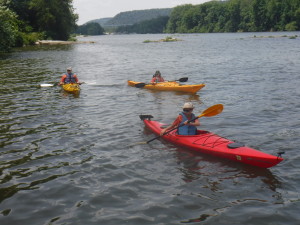Selecting an appropriate commercial vendor for an outdoor activity is part of the unit’s duty of care.
For instance, if the vendor is a source of rental canoes, rafts, or kayaks, does the vendor:

- maintain the equipment (including PFDs) in good working order?
- advise regarding river conditions (water temperature, obstructions, flow rate)?
- raise any skill level issues in relation to the river conditions?
- advise regarding potential weather issues, etc.?
Indeed, there have been multiple instances where the vendor’s judgment was placed into question due to the condition of the river, such as in this story involving Scouts, some of which reports resulted in law suits against the vendor.
Indeed, a rafting vendor in Idaho was sued by the estate of an adult volunteer who drowned after being thrown from a raft during a white water rafting trip with Scouts, for the reason that the rafting guides allegedly attempted to traverse Class IV-V rapids at a higher than recommended flow rate, placing into question the judgment of the rafting guides.
Another rafting vendor was sued for allegedly subjecting inexperienced rafters to “extraordinarily high river flow conditions”. See the story.
Accordingly, just because a commercial vendor offers an activity does not mean that the activity offered is suitable for any or all Scouts in the unit, as the activity may not be age-appropriate, or within the skill level of the Scouts in the unit, or due to environment issues. The unit leaders need to exercise appropriate judgment to make that decision.

The author had occasion recently to use a commercial vendor for a tree adventure course, which activity involved moving from tree to tree on different elements. From past experience, it was clear that this activity was both age appropriate, and within the skill level of the attending Scouts. However, the author noted that on this visit, the vendor had made changes to the initial safety briefing procedures that were well-received from a risk management standpoint.
The group received a paper prior to the safety briefing that included all topics to be covered in the briefing, also noting the helmet number of all participants who needed to receive the briefing. At the end of the briefing, the adult in charge of the group was to initial that the briefing had gone satisfactorily, had covered all required topics, and that all members of the group had received the briefing. Of course, part of this procedure was for the protection of the vendor liability-wise, but it also served as a reminder to the group which topics were to be covered, permitting questions to be asked regarding topics perhaps inadvertently omitted during the briefing.
In the end, the safety briefing procedure communicated to the group that the vendor took its risk management responsibility seriously, which impression was further fortified by the diligent and responsible attitudes of the vendor’s staff who monitored the activity during the day.
All of which resulted in a safe, successful, and enjoyable experience for the Scouts!
See, also, this article which makes clear that, with regard to zip line courses, regulation varies by state. It is up to the unit to ensure that any zip line course meets the minimum standards required by BSA.
Finally, Cunningham, in “Sea Kayaker’s More Deep Trouble” (2014) tells the story of three kayakers in rented kayaks who required rescue due to their inexperience in the face of challenging conditions.
While the kayakers were ultimately safely rescued, the author viewed the kayak vendor as being less than responsible for the following reasons:
- The vendor allowed the kayakers to venture into dangerously cold water wearing only street clothes,
- The vendor failed to provide rescue or reentry training either by video or live demonstration,
- The vendor failed to inform the kayakers about safety gear in the kayaks, and how to use it, and
- The vendor failed to alert the kayakers about the current weather forecast, or the effect of local winds and currents.

While some may argue that the primary responsibility for such matters might reside with the kayakers themselves, a prudent vendor, upon recognizing the inexperience and lack of preparedness of the kayakers, should have taken those steps necessary to mitigate the risks foreseeable to the vendor and soon to be encountered by the kayakers, as the necessary skills and information needed to do so was within the possession of the vendor, particularly as the kayaks which were rented were the vendor’s own kayaks.
